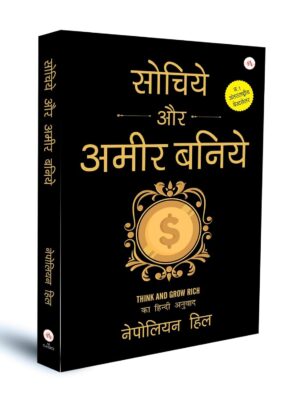The Great Gatsby by F. Scott Fitzgerald
Secure Checkout with Amazon!
- Top-Rated Books
- Readers Satisfaction
- Verified Customer Reviews
Description
The Great Gatsby by F. Scott Fitzgerald is one of those books that dives into the heart of the American Dream—both its glamour and its dark side. Set in the roaring 1920s, it tells the story of Jay Gatsby, a mysterious millionaire known for throwing lavish parties in hopes of winning back the love of his life, Daisy Buchanan. The novel isn’t just a love story; it’s a critique of wealth, ambition, and how people use money to chase happiness.
The Plot: Love, Wealth, and the Jazz Age
The story is narrated by Nick Carraway, a young man who moves to West Egg, Long Island, in search of success. Nick lives next to Gatsby, a man whose wealth and charm attract all sorts of people. But while people are drawn to Gatsby’s money, few actually know him. Nick soon learns that Gatsby’s fortune and the wild parties he throws are all for one reason: to reconnect with Daisy, his old love, who now lives across the bay with her wealthy husband, Tom Buchanan.
Daisy and Tom represent old money—wealth passed down through generations. Gatsby, on the other hand, comes from nothing and has worked his way up. This sets up a classic clash between “new money” and “old money,” showing how the American Dream can seem accessible, yet still out of reach.
The American Dream and Its Illusions
The heart of The Great Gatsby is really about the American Dream, which promises that anyone can achieve success and happiness if they work hard enough. Gatsby seems to be living proof of that: he’s rich, successful, and confident. But Fitzgerald shows that the dream isn’t as pure as it seems. Gatsby’s success is shadowed by illegal dealings, and his love for Daisy is a hopeless illusion. He’s spent years building himself up for her, yet the person he’s in love with is more of a memory than reality.
Daisy, in turn, is trapped by her own materialism. She loves the idea of Gatsby, the glamorous life he represents, but ultimately chooses comfort and security over true love. By the end, it becomes clear that money and status are only temporary distractions—they can’t bring real happiness.
Why The Great Gatsby Still Matters
This novel has stuck around for good reason. Fitzgerald’s writing paints a vivid picture of the 1920s, complete with glitzy parties, jazz music, and expensive fashion. But the themes in the story go beyond the era; they’re still relevant today. The obsession with wealth, the superficiality of society, and the hollowness that can come with chasing after something that never satisfies—these are things we see in modern life too.
Plus, Fitzgerald’s language is poetic yet straightforward, capturing emotions and moments with lines that stay with you. When Gatsby stares at the green light across the bay, symbolizing his unreachable dream, it’s a reminder of the things we all yearn for but may never have.
In the end, The Great Gatsby is a powerful look at love, loss, and the pursuit of happiness in a world that values appearance over reality. It’s a story that shows just how fragile dreams can be and makes us wonder what we’re really chasing after.






Reviews
There are no reviews yet.